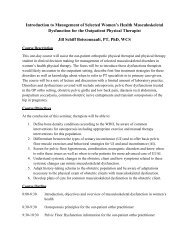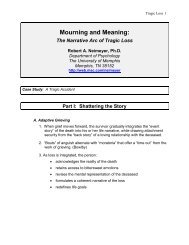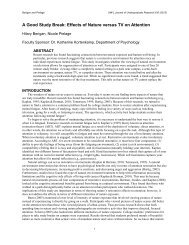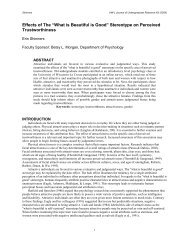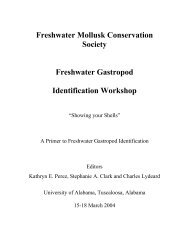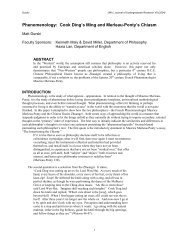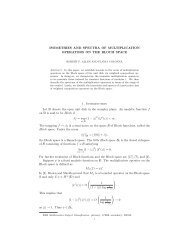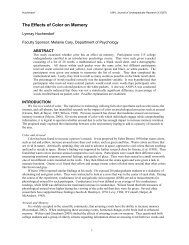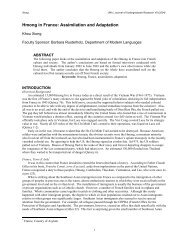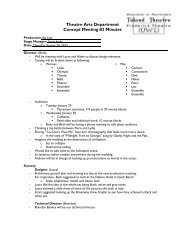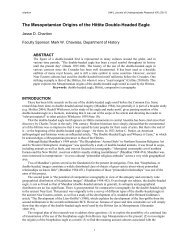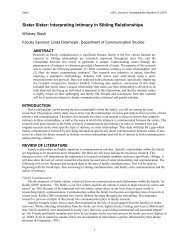A Guide for Terrestrial Gastropod Identification - University of ...
A Guide for Terrestrial Gastropod Identification - University of ...
A Guide for Terrestrial Gastropod Identification - University of ...
You also want an ePaper? Increase the reach of your titles
YUMPU automatically turns print PDFs into web optimized ePapers that Google loves.
In<strong>for</strong>mation summarized from: NatureServe, Roth & Sadeghian (2006), Pilsbry (1939),<br />
Northwest Forest Plan (2002), Sierra Nevada-Cascade Mountain Management Plan (1997), Roth<br />
(2002).<br />
TAXON AUTHOR<br />
G-<br />
RANK DISTRIBUTION<br />
Monadenia callipeplus S.S. Berry, 1940 G1G2 CA<br />
Monadenia chaceana S.S. Berry, 1940 G2 CA, OR<br />
Monadenia churchi<br />
Hanna and A.G. Smith,<br />
1933 G2 CA<br />
Monadenia circumcarinata (Stearns, 1879) G1 CA<br />
Monadenia cristulata S.S. Berry, 1940 G1G2 CA<br />
Monadenia fidelis (J.E. Gray, 1834) G4G5 AK, CA, OR, WA; Canada: BC<br />
Monadenia infumata (Gould, 1855) G2G3 CA<br />
Monadenia marmarotis S.S Berry, 1940 G1 CA<br />
Monadenia mormonum (Pfeiffer, 1857) G2 CA<br />
Monadenia scottiana S.S. Berry, 1940 G1G2 CA<br />
Monadenia setosa Talmadge, 1952 G2 CA<br />
Monadenia troglodytes Hanna and A.G.Smith, 1933 G1G2 CA<br />
Monadenia tuolumneana S.S. Berry, 1955 G1 CA<br />
Monadenia yosemitensis (Lowe, 1916) G1 CA<br />
Bulimulidae<br />
Kathryn E. Perez, Duke <strong>University</strong><br />
The Bulimulidae are a family <strong>of</strong> hundreds <strong>of</strong> species, mostly found in South America.<br />
Shells are bulimoid in <strong>for</strong>m and typically white or brown background color with grey or brown<br />
streaks or stripes. The largest species reach ~40 mm in length.<br />
The genus Drymaeus is restricted in the U.S. to Florida where these snails live on<br />
trees, bushes, or herbaceous vegetation. The species in this genus are semi-arboreal and are<br />
typically found estivating or crawling on vegetation (Hubricht, 1985).<br />
Rabdotus is one <strong>of</strong> the characteristic snails <strong>of</strong> the arid and semi-arid regions <strong>of</strong> Texas and<br />
adjacent Mexico (Fullington & Pratt, 1973). The species <strong>of</strong> Rabdotus occupy a range <strong>of</strong> habitats<br />
from coastal plain scrubland to Chihuahuan desert. These snails are colonial and can reach high<br />
densities locally and are <strong>of</strong>ten found crawling or estivating on tall grass, shrubs, mesquite brush,<br />
on human build structures, or under rocks and other cover. They are typically active during<br />
times <strong>of</strong> high humidity, at night, or after rain. In parts <strong>of</strong> their range after rainfall they have been<br />
known to be active in high enough concentrations that slicks caused by smashed snails have<br />
21



